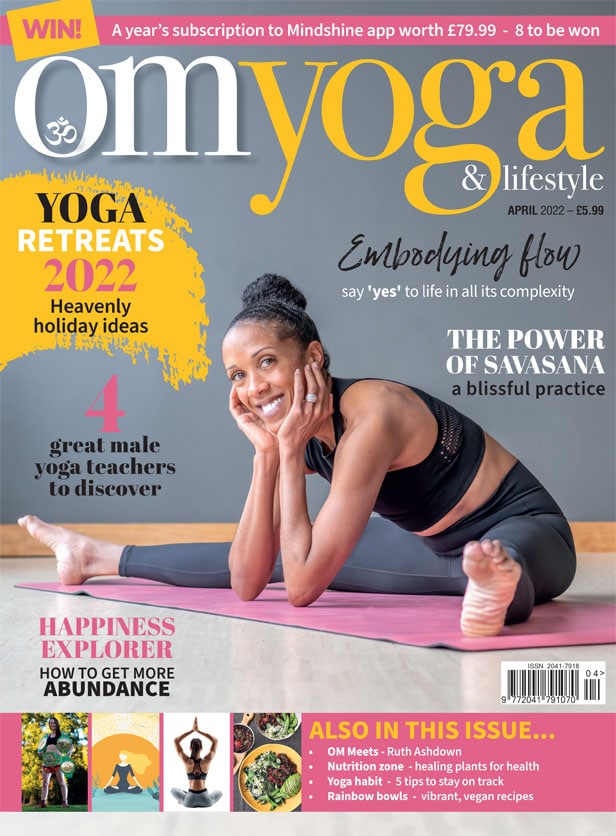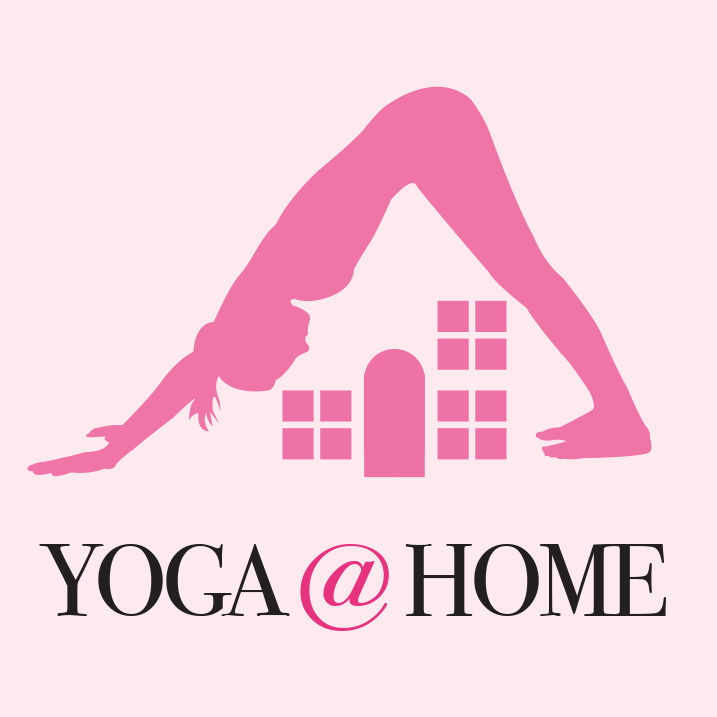
Grounding yoga flow
10 postures to ground the body and mind during Stress Awareness Month. By Laura Dodd
In our modern, busy and stressful times, it can sometimes feel like the ground has shifted beneath our feet. Connecting to the earth element has the potential to ground us, to help us feel more secure, safe, stable, confident, resilient, strong, less stressed — enabling us to have a steady base from which to grow and evolve. In Ayurveda, it is said we can connect to the earth element and bring Muladhara chakra, the root chakra located at the base of the spine, into balance through forward folds and balancing poses.
Move slowly through the following postures to ground the body and mind, strengthening and opening the hips and hamstrings. Keep an awareness of the earth beneath your feet and a connection to a strong and steady breath. For this practice you will need two yoga blocks. Now let’s begin!
WATCH THE MINI VERSION OF THIS CLASS VIA THE OM APP & WEBSITE or visit theyogaclass.co for the full-length class, plus 200+ more on-demand classes
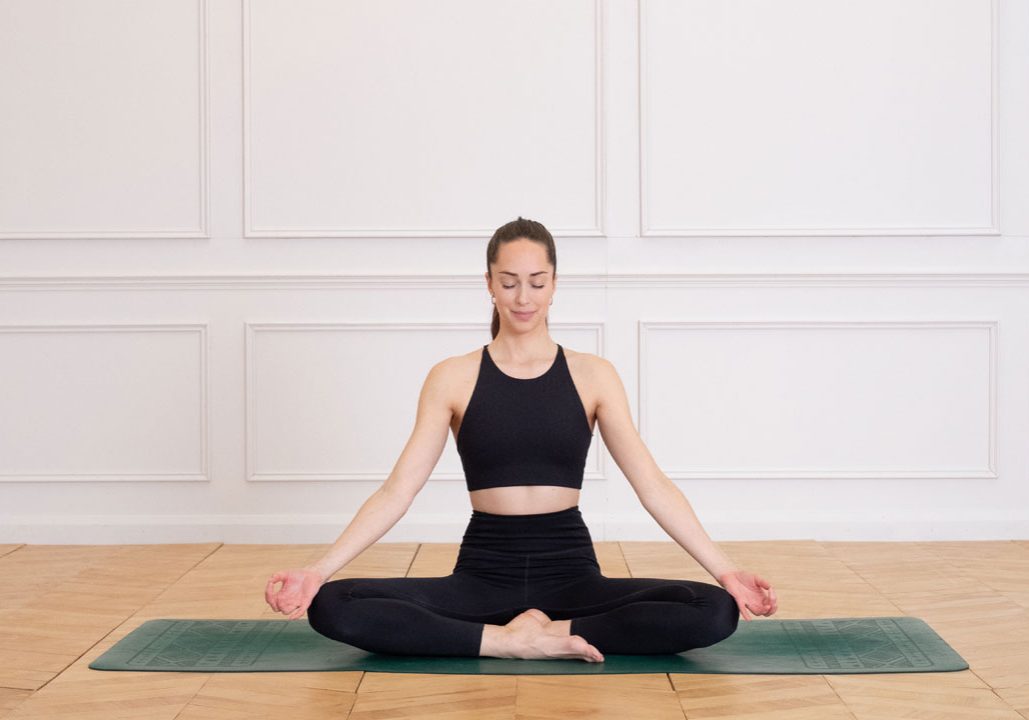
1. Muktasana (Meditation Pose)
Come to a comfortable seat, perhaps using a yoga block or a cushion under your sit bones. Bend the knees so the shins are parallel with the front of the body and the ankles are crossed. Draw up tall through the spine so the crown of the head lifts, tuck the chin very slightly into the chest and roll the shoulders down the back. Anchor your mind on a calm and conscious breath, hold for as long as you need.
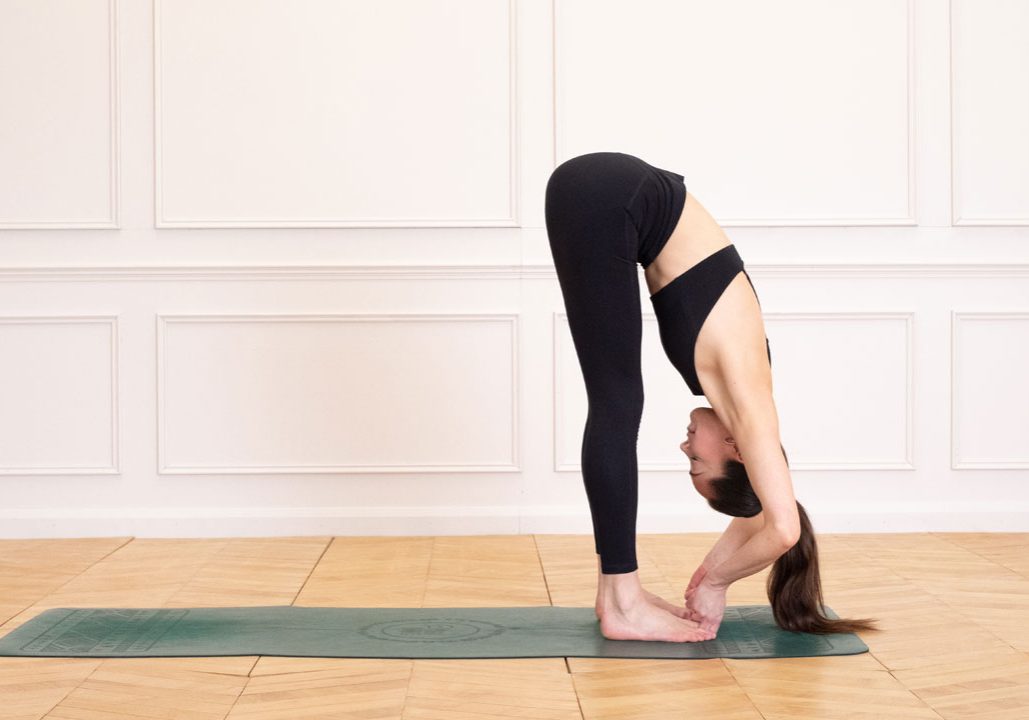
2. Pandangusthasana (Big Toe Pose)
From standing, take your feet hip distance apart, fold forward over the legs and taking hold of the big toes with your first two fingers. Inhale, extend through the legs and lift the sternum, straightening through the arms. Exhale, draw the elbows out to the sides and gently fold deeper over the legs being careful not to overstretch. Draw the belly in and your spine long, bending the knees if you need. Hold for five deep breaths.
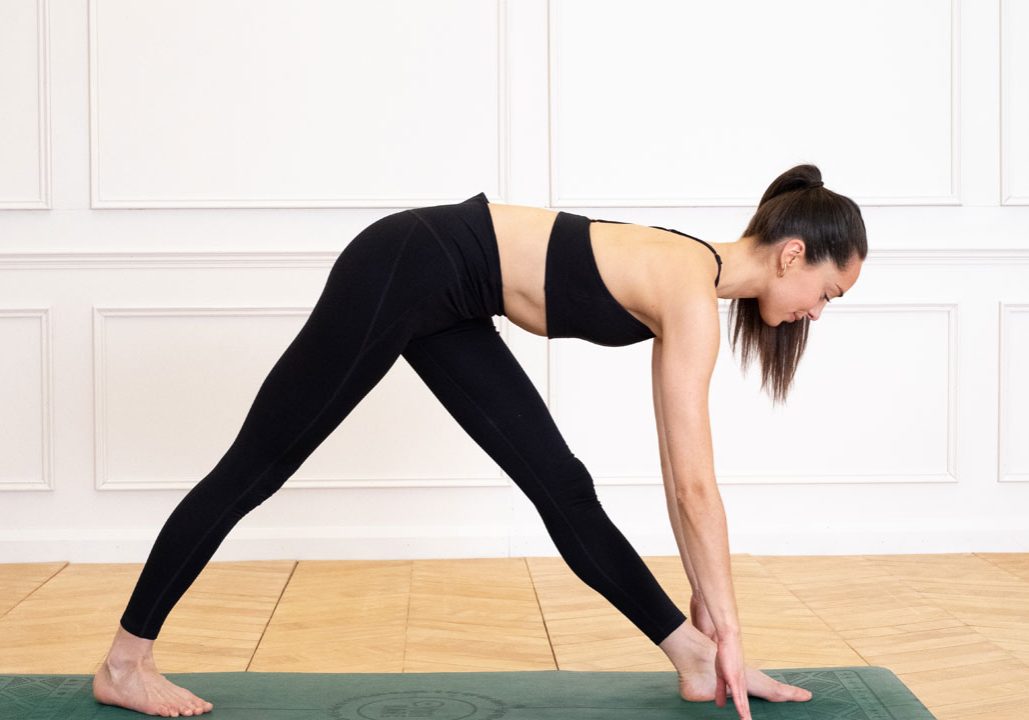
3. Parsvottanasana (Pyramid Pose)
From Tadasana (Mountain Pose), take a wide step back with your right foot. Keep your feet hip width distance apart and turn the right foot to around 45-90º. Square the hips by drawing the right hip forward. Inhale to lift the chest and exhale to fold forward, hingeing at the hips. Use blocks under the hands or bring the hands to the mat, being careful not to overstretch. Hold for five deep breaths. Repeat on the other side.
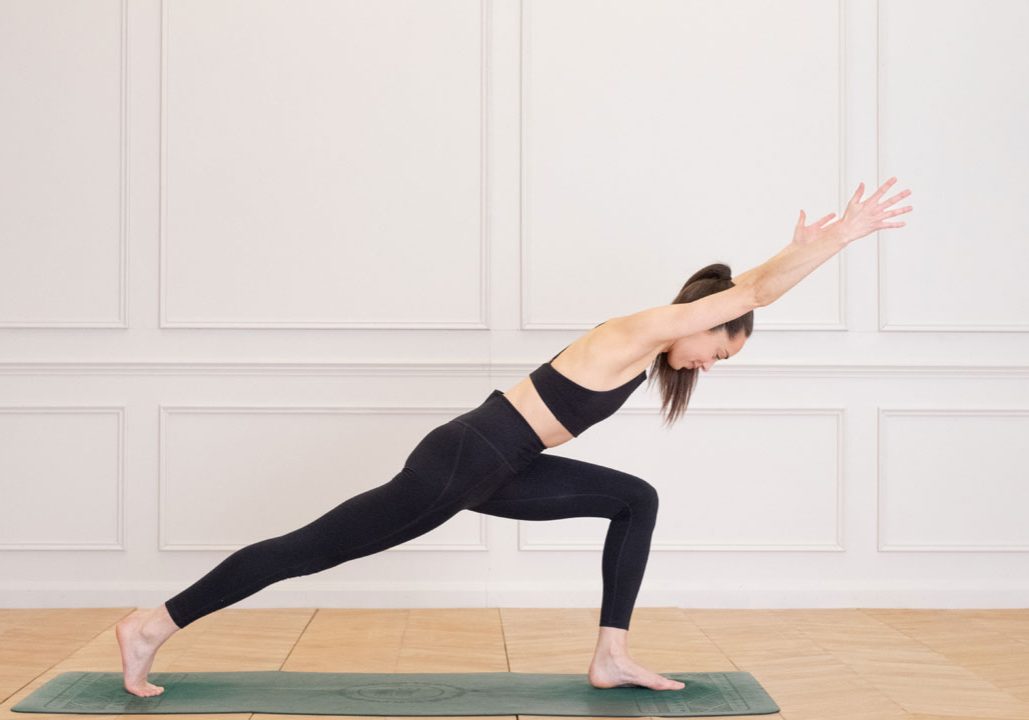
4. Ashta Chandrasana (Forward Bend Variation Arms: High Lunge With Arms Extended Forward Pose / Arrow Lunge Pose)
From Tadasana, take a wide step back with your left foot. Stay on the ball of the back foot as you square the hips and bend deeply into the right knee. Inhale as you reach up with the hands, lengthening through the spine. On the exhale, hinge from the hips and reach towards the front of the room. Make sure your front knee is tracking over the front ankle. Feet can be hip width distance apart for more stability. Hold for five deep breaths. Repeat on the other side.
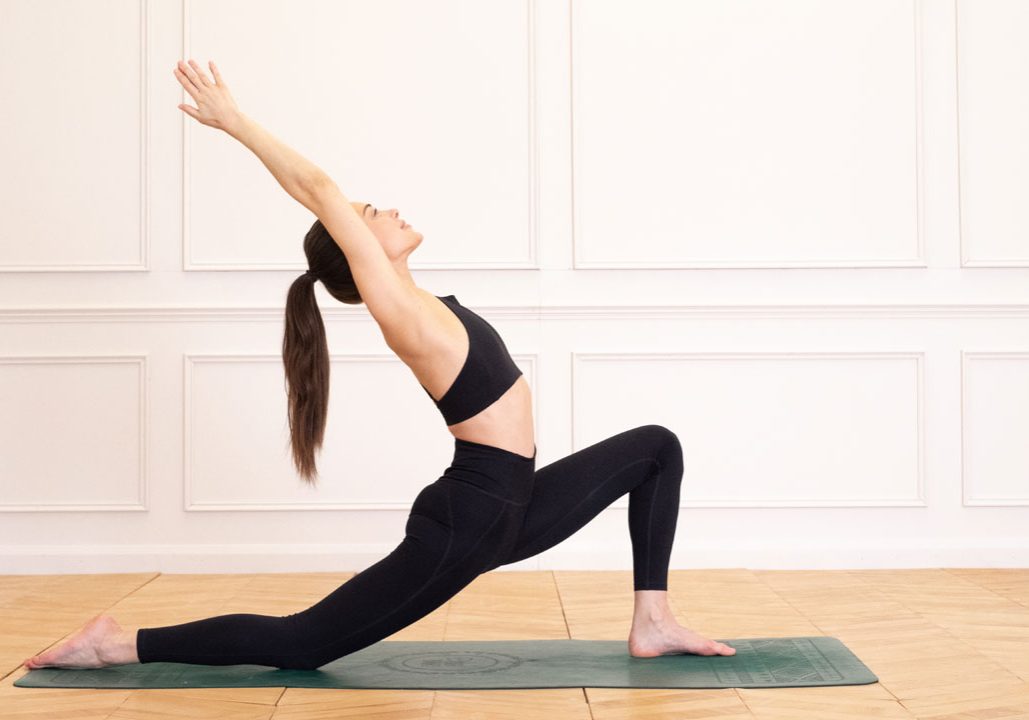
5. Anjaneyasana (Low Lunge Pose)
From Arrow Lunge, lower the back knee to the mat and untuck the toes, keeping your back foot pointed and back leg straight. Again, check your front knee is tracking over the front ankle, as you squeeze your back hip forward in space to square the hips. On the inhale, reach up with the hands and lift the sternum, as you draw the tailbone down and keep the glutes active. Externally rotate the shoulders as you lift the chest and sink lower into the hips, squeezing the inner thighs together. Hold for five deep breaths. Repeat on the other side.
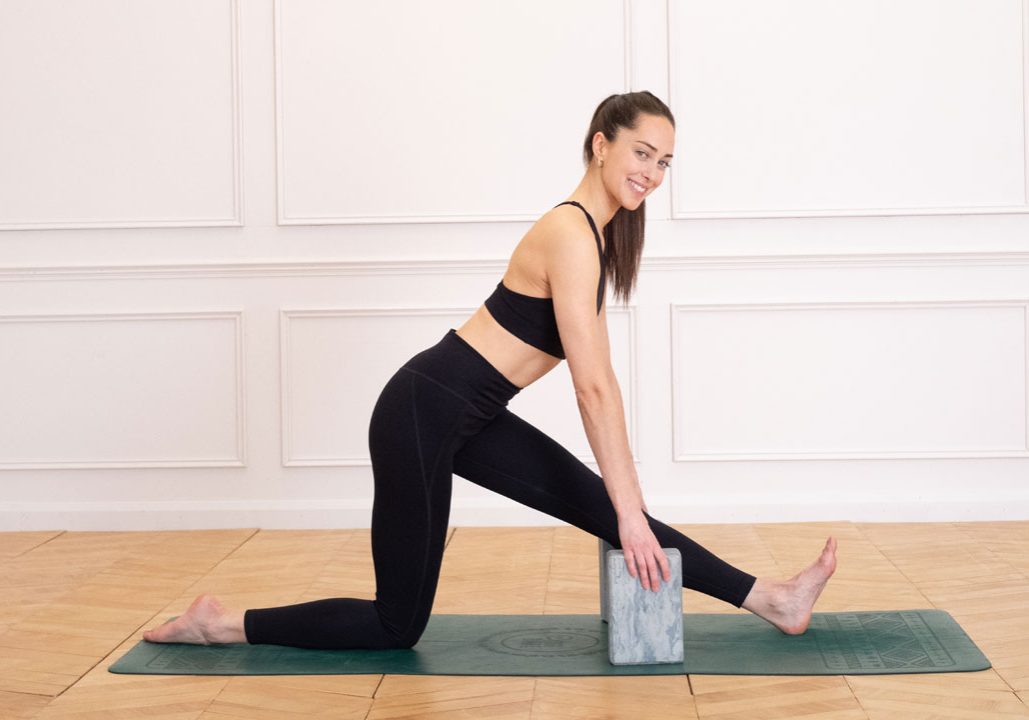
6. Ardha Hanumanasana (Half Splits Pose)
From a Low Lunge, extend the front leg keeping the back knee directly under the hip and flexing the front toes towards you. As you inhale, lengthen through the spine and as you exhale, fold forward keeping the hips square. Keep the spine long and the chest broad, as you bring your hands to the mat or to your blocks, being careful not to overstretch. Hold for five deep breaths. Repeat on the other side
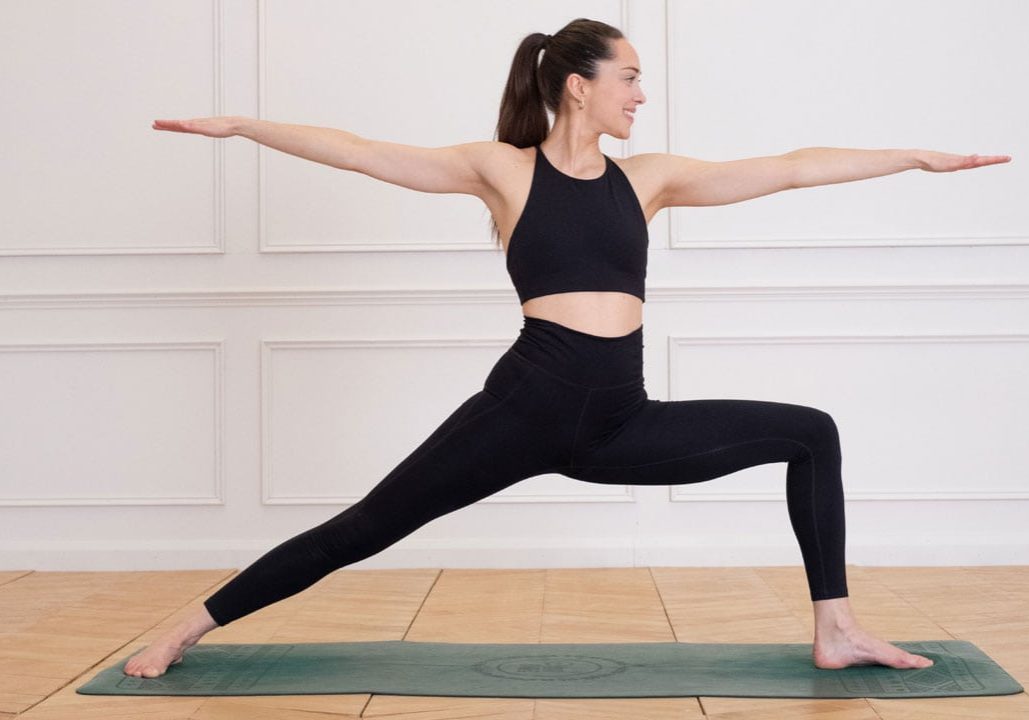
7. Virabhadrasana II (Warrior 2 Pose)
From standing, facing the left[1]hand side of your mat, take a wide step out so your feet are roughly four feet apart. Turn the right toes to face the front of the mat and bring the left foot to around 45-90º, making sure the heel of the front foot is in line with the middle arch of the back foot and the back foot is grounded. Inhale here. Exhale, bend the front knee, checking the front knee is tracking over the front ankle. Bring your arms parallel to the earth, keeping your torso and hips facing the left side of your mat. Relax the shoulders away from the ears. Hold for five deep breaths. Repeat on the other side.
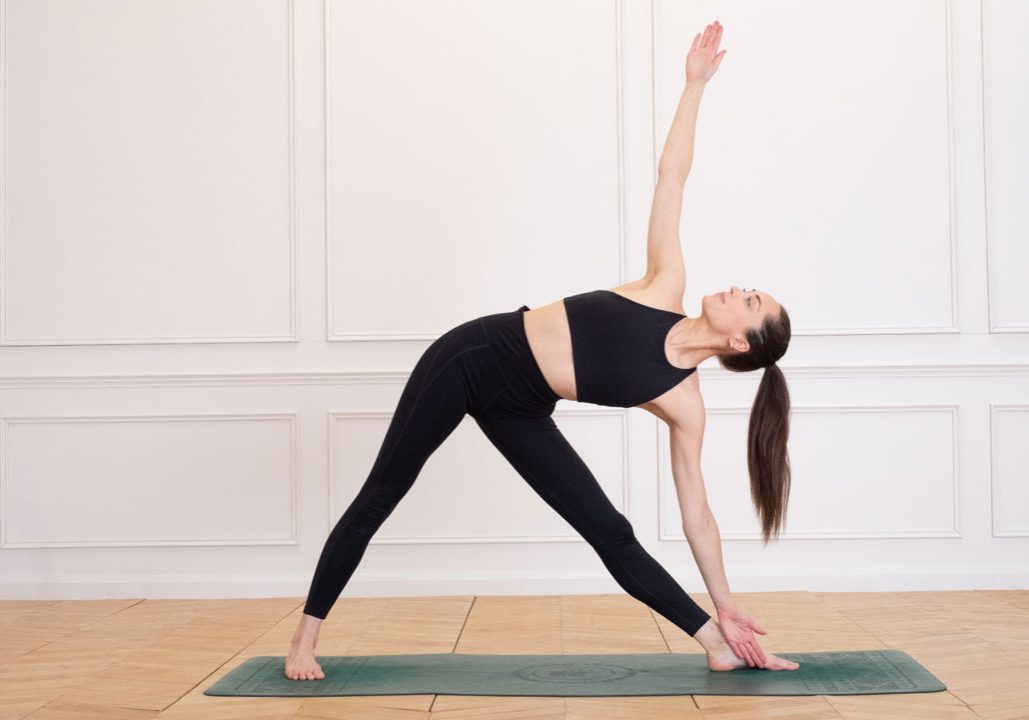
8. Utthita Trikonasana (Extended Triangle pose)
From standing, facing the left-hand side of your mat, take a wide step out so your feet are roughly 3-4 feet apart. Turn the right toes to face the front of the mat and bring the left foot to around 45-90º, making sure the heel of the front foot is in line with the middle arch of the back foot and the back foot is grounded. Bring the arms parallel to the mat. As you inhale, reach the right arm forward and draw the right hip back in space, hingeing at the hip. Exhale as you bring the right hand to a block, your shin, or the mat. Keep length in the sides of the body, the shoulders in line with the hips and legs and the chest rotated to the sky. Inhale, as you take the gaze and the left hand up. Hold for five deep breaths. Repeat on the other side.
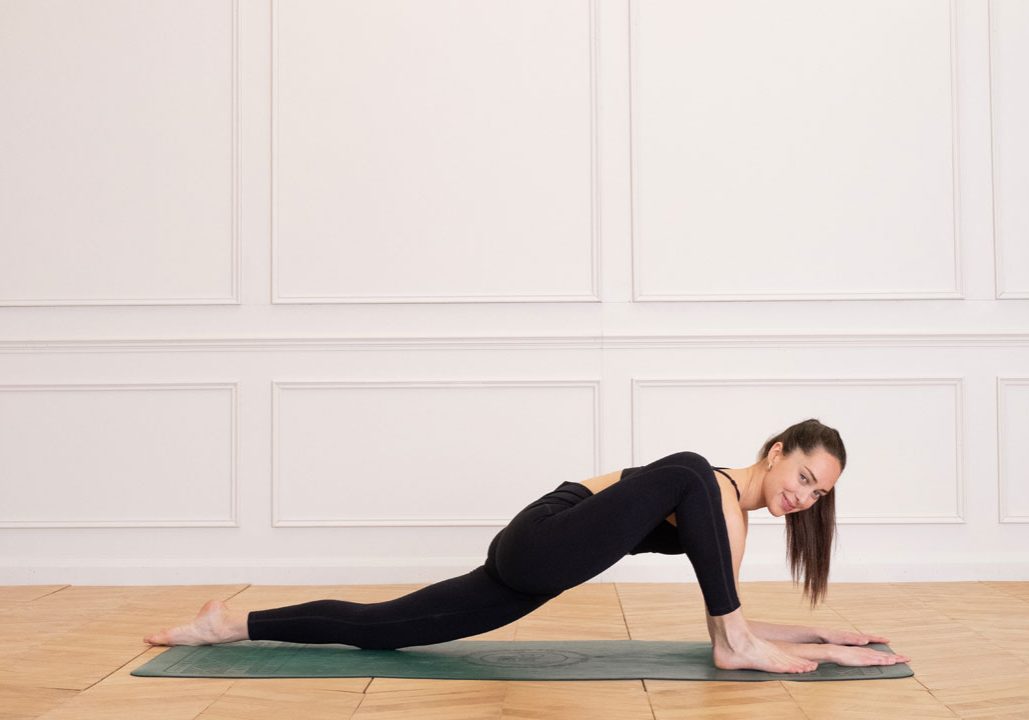
9. Utthan Pristhasana (Lizard Pose)
Inhale with your hips and legs in a Low Lunge pose position. Exhale to bring your hands to the floor inside your front foot. You may need to draw your front foot out to the edge of your mat slightly, keeping the front knee directly over the ankle. Stay on your hands, bring your hands to blocks or bring your forearms to the mat, keeping the elbows under the shoulders. Hold for five deep breaths. Repeat on the other side.
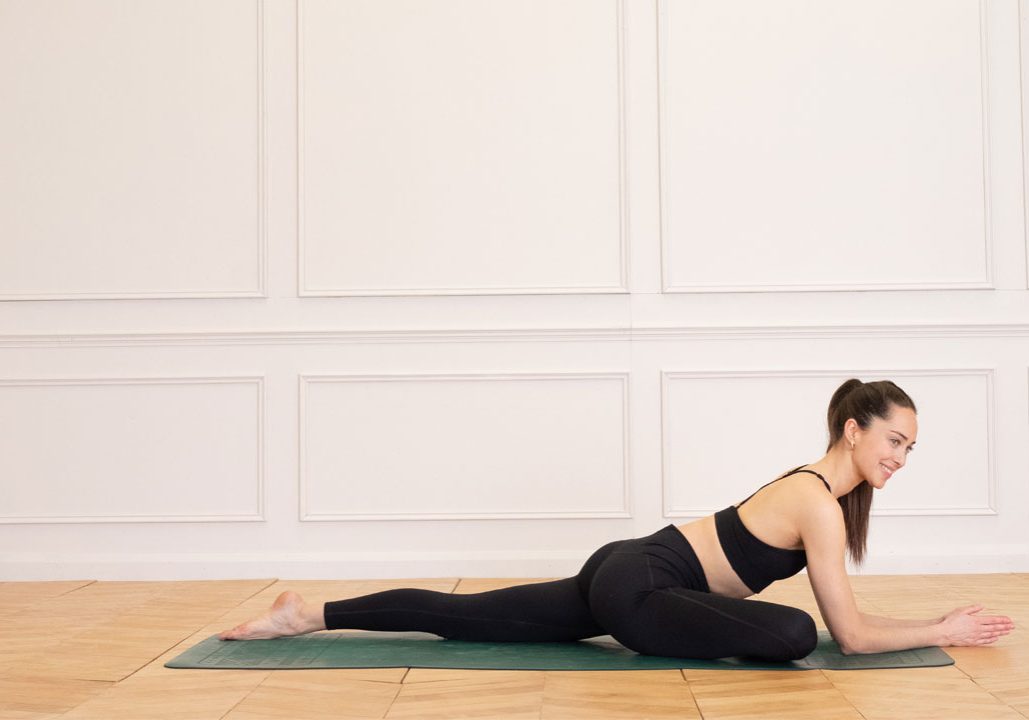
10. Eka Pada Rajakpotasana (Sleeping Pigeon Pose)
From Lizard pose slide your front foot across towards your left wrist, bringing the shin, knee and pelvis to the mat. Make sure you don’t feel any discomfort in the front knee and find a position for the front shin that works for you. The front shin should be at a maximum of parallel with the front edge of your mat. The left leg is straight out behind you with the toes pointed. Try to keep the weight evenly distributed between both sides of the pelvis, using a block under the right glute if needed. Open the chest, take an inhale, exhale fold forwards onto the hands or forearms. Hold for five deep breaths. Repeat on the other side.



